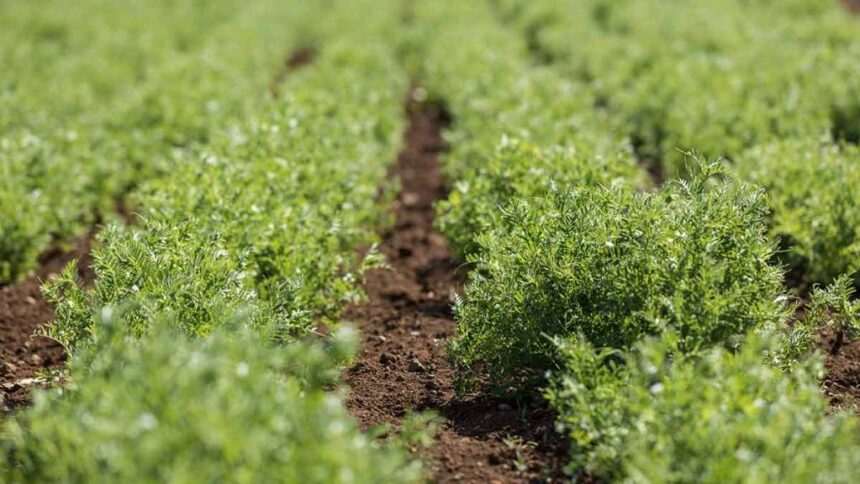Lentils are a nutritious and in-demand legume, offering a great source of protein, fiber, and essential nutrients. While lentils are not traditionally a major crop in South Africa, interest in lentil farming is increasing, especially as the demand for plant-based proteins grows both domestically and internationally. This article explores the profitability of lentil farming in South Africa, highlighting the key factors that influence success, potential challenges, and how farmers can optimize their operations for maximum returns.
Growing Conditions for Lentils in South Africa
Lentils are typically grown in regions with moderate climates, making South Africa an ideal candidate for expanding lentil production. However, certain environmental conditions are necessary for lentils to thrive:
- Climate: Lentils require a cool climate to grow successfully, with temperatures ideally between 15°C and 25°C during the growing season. They are generally suited to temperate regions with winter rainfall or dry conditions, making places like the Western Cape, Eastern Cape, and parts of the Northern Cape good options.
- Soil: Lentils prefer well-drained, loamy soil with a neutral to slightly acidic pH (6.0 to 7.0). The soil should be rich in organic matter to support good growth.
- Water Requirements: While lentils are relatively drought-tolerant, they still require sufficient moisture during their growing season. A moderate amount of rainfall during the growing season is ideal, though irrigation might be necessary in drier areas.
Factors Affecting Lentil Farming Profitability
Several factors influence the profitability of lentil farming in South Africa, from input costs to market prices. Understanding these factors can help farmers make informed decisions and maximize their returns.
1. Input Costs
As with any crop, the cost of inputs such as seeds, fertilizers, pesticides, and labor plays a significant role in determining profitability. While lentils are generally less resource-intensive than some other crops, they still require careful management:
- Seed Costs: Lentil seeds are relatively affordable, though prices can vary depending on the variety and the source. Farmers typically use certified seeds to ensure high-quality production.
- Fertilization and Soil Amendments: Lentils are nitrogen-fixing plants, meaning they help improve soil fertility by converting atmospheric nitrogen into a form that can be used by plants. However, they still benefit from the addition of phosphorus and potassium. Organic matter, such as compost, can also be added to improve soil health.
- Labor Costs: Lentil farming requires labor for planting, weeding, irrigation, and harvesting. While the process is less labor-intensive than some crops, it still requires a skilled workforce during key stages of the growing season.
- Irrigation: In regions where rainfall is not reliable, lentil farmers may need to invest in irrigation systems. While lentils are drought-tolerant, consistent water availability ensures healthy growth and higher yields.
2. Yield and Crop Management
Lentils are generally considered a low-input, high-value crop. Depending on the growing conditions and management practices, a typical lentil crop in South Africa can yield anywhere from 1 to 2 tons per hectare. Yield is influenced by factors such as:
- Variety: Choosing the right lentil variety for local conditions is essential. Some varieties are better suited to dryland farming, while others perform well under irrigated conditions.
- Crop Rotation and Soil Health: Lentils benefit from crop rotation, particularly with cereals, as this reduces the buildup of pests and diseases. Additionally, maintaining healthy soil improves yields and reduces the need for chemical inputs.
- Pest and Disease Control: Lentils are vulnerable to diseases such as rust, powdery mildew, and blight, as well as pests like aphids and weevils. Organic or chemical control methods may be necessary to protect the crop and ensure a good harvest.
3. Market Prices and Demand
Lentils are a popular food source, particularly in plant-based diets, making them an attractive option for farmers. The global demand for lentils has been increasing, driven by the rise in vegetarian, vegan, and health-conscious consumer habits. However, market prices can fluctuate due to factors such as:
- Supply and Demand: The profitability of lentil farming is heavily influenced by market supply and demand. Prices are generally higher when supply is low or when lentil production has been impacted by factors like weather conditions in key producing countries.
- Local and Export Markets: While lentils are not widely grown in South Africa, there is growing domestic demand, particularly among consumers interested in plant-based proteins. Additionally, exporting lentils to international markets can offer higher profit margins, particularly if South African farmers can position themselves as a reliable, high-quality source of lentils.
- Price Volatility: Like most agricultural commodities, lentil prices can be volatile, influenced by weather conditions, global production levels, and changing consumer trends. Farmers should consider long-term contracts or storage options to manage price fluctuations.
4. Profitability Estimates
While the profitability of lentil farming can vary, it is generally considered a high-value crop with the potential for good returns. Based on average yields and market prices, lentil farmers in South Africa can expect to earn between R15,000 to R30,000 per hectare, depending on the scale of their operation and management practices.
However, to maximize profitability, farmers need to carefully manage input costs, optimize yields, and target the right markets. For small-scale farmers, lentils offer the potential for diversification and a lower-risk crop, especially when grown in rotation with other crops.
Challenges in Lentil Farming
While lentil farming offers significant potential, there are challenges to consider:
- Pest and Disease Management: Lentils are susceptible to various pests and diseases, which can significantly reduce yields. Integrated pest management strategies and regular monitoring are key to minimizing losses.
- Climate Risks: Lentils are sensitive to frost, and unexpected cold spells can damage crops. Farmers in colder regions need to be aware of this risk and plan accordingly.
- Market Access: For small-scale farmers, access to markets—both local and international—can be a challenge. Establishing reliable distribution channels and ensuring high-quality production are critical for success.
Lentil farming in South Africa presents a profitable opportunity for farmers looking to diversify their crops or enter the legume market. With relatively low input costs, a growing demand for plant-based proteins, and favorable growing conditions in certain regions, lentils can be a viable and rewarding crop. However, successful lentil farming requires careful management of inputs, pest control, and market conditions. By focusing on good agronomic practices and identifying profitable markets, farmers can take advantage of the growing interest in lentils and enjoy long-term profitability.







